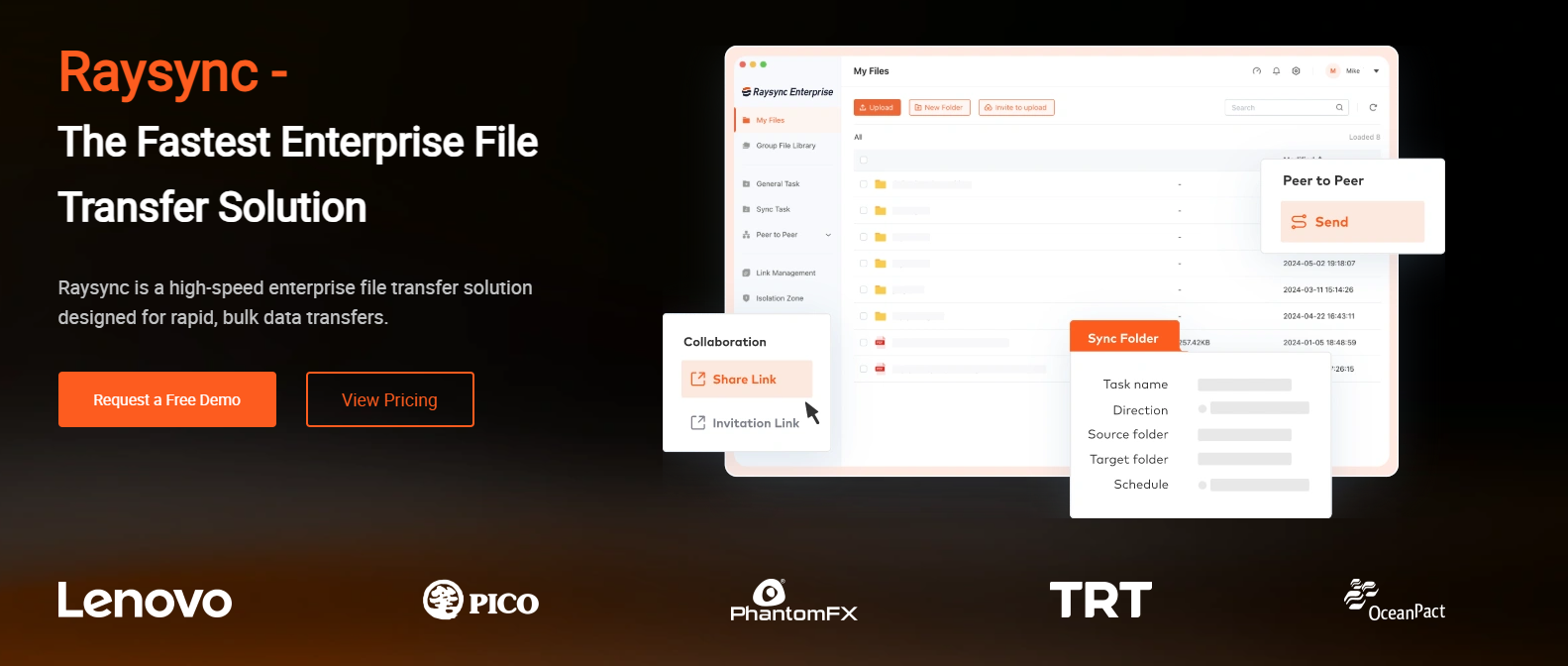Evaluating File Transfer Performance Under Network Impairments: Raysync vs. FileZilla
August 27, 2025The Challenge of Network Instability in File Transfers
In today's global business environment, file transfers frequently encounter network issues that cause packet loss and latency - particularly in cross-border transfers. These impairments can significantly degrade transfer speeds and reliability. To properly evaluate transfer software performance, especially for international use cases, it's critical to test under realistic network conditions that simulate these impairments.
Testing Methodology
We conducted controlled tests comparing Raysync (a high-performance transfer solution) with FileZilla (a traditional FTP client) under simulated adverse network conditions using the Clumsy network impairment tool on Windows.
Network impairment settings:
-
200ms latency (simulating international transfer distances)
-
5% packet loss (simulating congested networks)
Performance Results
FileZilla:
Raysync:
|
Metric |
FileZilla |
Raysync |
Improvement |
|
Transfer Speed |
148.4 Kb/s |
101 Mb/s |
680x faster |
|
Reliability |
Frequent timeouts |
Zero transfer failures |
- |
|
Bandwidth Utilization |
<5% |
>95% |
19x better |
Key Findings
-
Speed Advantage: Raysync demonstrated remarkable resilience to network impairments, maintaining transfer speeds of 101 Mb/s - approximately 680 times faster than FileZilla's 148.4 Kb/s under identical conditions.
-
Protocol Efficiency: The dramatic performance difference stems from Raysync's proprietary UDP-based acceleration protocol, which includes:
- Intelligent packet loss recovery
- Dynamic congestion control
- Parallel stream optimization
- Forward error correction
3. Enterprise-Grade Reliability: While FileZilla experienced multiple timeouts and required manual intervention, Raysync completed all transfers successfully without interruption.
Why This Matters for Businesses
For organizations with:
- Large file transfer requirements
- Cross-border operations
- Mission-critical data movements
- Strict compliance needs

Raysync provides:
✔ Consistent high-speed transfers regardless of network conditions
✔ Military-grade security with AES-256 encryption
✔ Seamless integration with existing infrastructure
✔ Up to 100x faster than traditional solutions
Recommendation
Based on our testing, Raysync represents a quantum leap in file transfer technology, particularly for enterprises operating in challenging network environments. The ability to maintain near-line-speed transfers despite packet loss and latency makes it an ideal solution for global business operations.
For teams requiring reliable, high-speed transfers of large files across international borders, we strongly recommend evaluating Raysync against current transfer solutions.
You might also like
![[2025] Well Fixed “Syncthing Slow” Issue](http://images.ctfassets.net/iz0mtfla8bmk/4eodFef7F5CB371TTu0K3P/d9d920304615f0e4a881f67d5c1cdef9/syncthing-slow.png)
Industry news
March 7, 2025Is your Syncthing slow? You're not alone! Discover common causes and simple fixes to boost your sync speeds.

Industry news
January 9, 2025Ensure business continuity with robust data backup strategies. Protect your valuable data from cyber threats, hardware failures, and other unforeseen events.

Industry news
December 12, 2024Discover the ultimate comparison of SFTP vs FTPS speed, max transfer capabilities, and faster alternatives like Raysync for seamless, secure, and high-speed file transfers!
